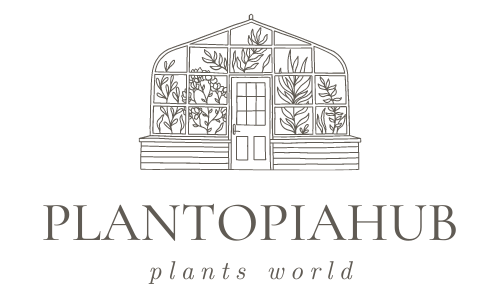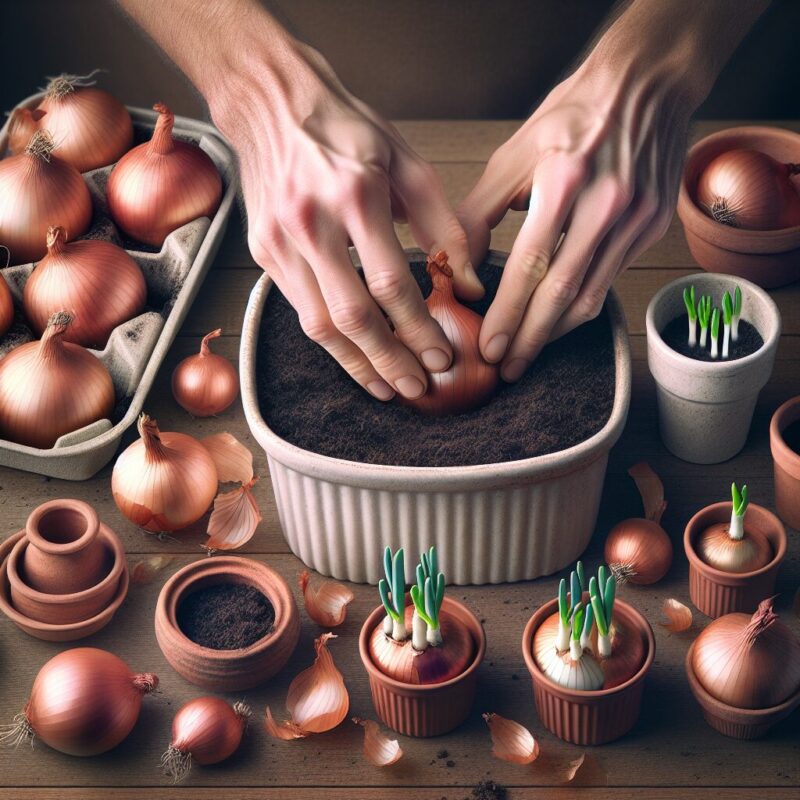Planting onions in containers is a convenient and practical way to enjoy fresh and homegrown onions, even if you have limited garden space. Whether you live in an apartment, have a small yard, or simply want to maximize your harvest, container gardening offers a solution. Interestingly, onions are hardy and can thrive in containers, provided you adhere to the proper planting techniques and care. One unique aspect of growing onions in containers is that it allows for better control over soil conditions, making it easier to prevent issues such as weeds and pests. In addition, container gardening enables you to extend the growing season, as containers can be easily moved indoors during colder weather.
Now that we’ve explored the benefits and unique features of growing onions in containers, it’s time to delve into the key takeaways that will help you successfully grow your own onions. Firstly, choosing the right container size is crucial. We will discuss the ideal container dimensions and materials for onion cultivation, understanding the importance of proper drainage for healthy root development. Moreover, we will highlight the essential factors to consider when selecting the right onion varieties for container gardening, ensuring you choose ones that are suitable for your specific growing conditions. Lastly, we will guide you through the step-by-step process of planting onions in containers, from preparing the soil mix to caring for your crops as they grow. Stay tuned to discover all the tips and tricks for a rewarding onion planting experience in containers.
Key Takeaways
1. Choose the right container: Use a deep container with drainage holes to allow for proper root development, and ensure it is large enough to accommodate the onion bulbs.
2. Prepare the soil mixture: Create a well-draining soil mixture by combining potting soil with compost or well-rotted manure. Onions prefer slightly acidic soil, so adding some sand or perlite can help improve drainage.
3. Plant the onion bulbs: Gently separate the onion bulbs into individual sets and plant them about 1 inch deep in the container, with the pointed side facing upwards. Space the bulbs at least 2 inches apart to allow room for growth.
4. Provide adequate sunlight and water: Place the container in a sunny spot where the onions will receive at least 6-8 hours of sunlight per day. Water the onions regularly, keeping the soil consistently moist but not waterlogged, and avoid overhead watering to prevent diseases.
5. Harvest and care for the onions: Onions are ready to harvest when the tops have started to dry and fall over. Gently loosen the soil and lift the onions out of the container. Allow them to cure in a warm, well-ventilated area for a few weeks before storing them in a cool, dark place. Regularly check for any signs of disease or pests to ensure healthy growth.
What is the best way to plant onions in containers?
Choosing the Right Container
When planting onions in containers, it’s important to select the right container size and type. Look for a container that is at least 8-10 inches deep to allow sufficient room for the onion bulbs to grow. Additionally, ensure that the container has good drainage holes to prevent the onions from becoming waterlogged.
Selecting the Right Soil
Onions thrive in well-draining soil that is rich in organic matter. Mix equal parts of garden soil, compost, and perlite or sand to create a loose and fertile potting mix. Avoid using heavy or compacted soil as it may impede bulb development.
Planting Onions
Start by filling the container with the prepared potting mix, leaving about an inch of space below the rim. Next, create furrows in the soil that are about half an inch deep and 2-3 inches apart. Carefully place the onion sets or transplants into the furrows, ensuring that each bulb is spaced adequately. Finally, cover the bulbs with soil and gently pat it down.
Caring for Container-Grown Onions
Container-grown onions require regular care to ensure their healthy growth:
- Watering: Onions need consistent moisture, so water the container when the top inch of soil becomes dry. Avoid overwatering as it can lead to rotting.
- Sunlight: Place the container in a sunny location where the onions can receive at least 6-8 hours of direct sunlight per day. This promotes optimum bulb development.
- Fertilizing: Feed the onions with a balanced liquid fertilizer every 2-3 weeks to provide them with essential nutrients for growth.
- Weed Control: Regularly remove weeds around the container to prevent competition for nutrients and space.
- Pest and Disease Management: Monitor the onions for pests such as aphids or onion maggots. Use appropriate organic pest controls if necessary. Additionally, ensure proper air circulation to prevent fungal diseases.
Harvesting and Storing Onions
Onions are usually ready for harvest when the tops turn yellow and fall over. Carefully lift the bulbs from the soil using a garden fork or trowel. Allow the harvested onions to cure for a few days in a well-ventilated area before storing them in a cool, dry place. Properly cured onions can last for several months.
Helpful Tips for Successful Onion Container Gardening:
- Should I start with seeds or onion sets?
- What are the best onion varieties for container gardening?
- How many onions can I plant in a container?
- Can I grow onions in containers indoors?
- How often should I water my container-grown onions?
- Can I mulch my container-grown onions?
- When is the ideal time to harvest onions in containers?
Frequently Asked Questions
1. Can onions be grown in containers?
Yes, onions can be successfully grown in containers. In fact, containers provide an ideal environment for growing onions as they allow for better control over soil conditions and drainage.
2. What type of container is best for planting onions?
For planting onions, it is recommended to use a container that is at least 8 inches deep and has a diameter of 10-12 inches. Choose a container made of sturdy materials like plastic or terracotta, ensuring it has proper drainage holes.
3. How do I prepare the soil for planting onions in containers?
Start by filling the container with a well-draining potting mix that is rich in organic matter. Onions prefer slightly acidic soil with a pH of 6.0-6.8. Adding compost or well-rotted manure to the potting mix will provide the necessary nutrients for healthy onion growth.
4. When is the best time to plant onions in containers?
The best time to plant onions in containers is in early spring, once the soil temperature reaches around 50°F (10°C). This usually coincides with the last frost date in your area. Onions require a long growing season and need around 90-120 days to mature.
5. How often should I water my container-grown onions?
Onions should be watered consistently throughout the growing season. Keep the soil moist but not overly saturated. Stick your finger about an inch into the soil, and if it feels dry, water the container thoroughly. Avoid overwatering, as it can lead to rot.
6. Can I grow onions from seeds in containers?
Yes, you can grow onions from seeds in containers. Sow the seeds directly into the potting mix, following the recommended spacing on the seed packet. If starting seeds indoors, transplant the seedlings into the container once they have developed a few leaves.
7. Do onions need full sun to grow in containers?
Yes, onions thrive in full sun. Make sure to place your container in a spot that receives at least 6-8 hours of direct sunlight daily. Lack of sunlight can lead to weak growth and smaller bulbs.
8. Should I fertilize my container-grown onions?
Yes, it is beneficial to fertilize container-grown onions. Use a balanced fertilizer with a formulation like 10-10-10 or 14-14-14. Apply the fertilizer according to the package instructions, usually every 4-6 weeks, to provide the necessary nutrients for healthy onion development.
9. How do I know when my container-grown onions are ready to harvest?
Onions are ready to harvest when the tops start to yellow and fall over. Once this happens, stop watering the plants and allow them to dry for a few days. Carefully dig out the bulbs, brush off any excess soil, and store them in a cool, dry place to cure before using.
10. Can I reuse the potting mix after harvesting onions?
Yes, you can reuse the potting mix after harvesting onions. However, it is advised to refresh the potting mix by adding compost or organic matter and replenishing nutrients with a slow-release fertilizer. This will ensure the soil remains fertile for the next planting season.
Final Thoughts on How To Plant Onions In Containers
Planting onions in containers is a convenient and rewarding way to grow your own fresh produce, even if you have limited space. By following the proper techniques and providing the right growing conditions, you can enjoy a bountiful harvest of flavorful onions. Remember to choose the right container, prepare the soil properly, and provide adequate watering and sunlight. With a little care and attention, you’ll be delighted with the results of your container-grown onions.
In conclusion, container gardening opens up endless possibilities for urban gardeners and those with limited outdoor space. Planting onions in containers is a great way to add a versatile and delicious crop to your home garden. Enjoy the satisfaction of harvesting your own onions and experiment with different onion varieties to diversify your culinary experiences. Happy container gardening!

